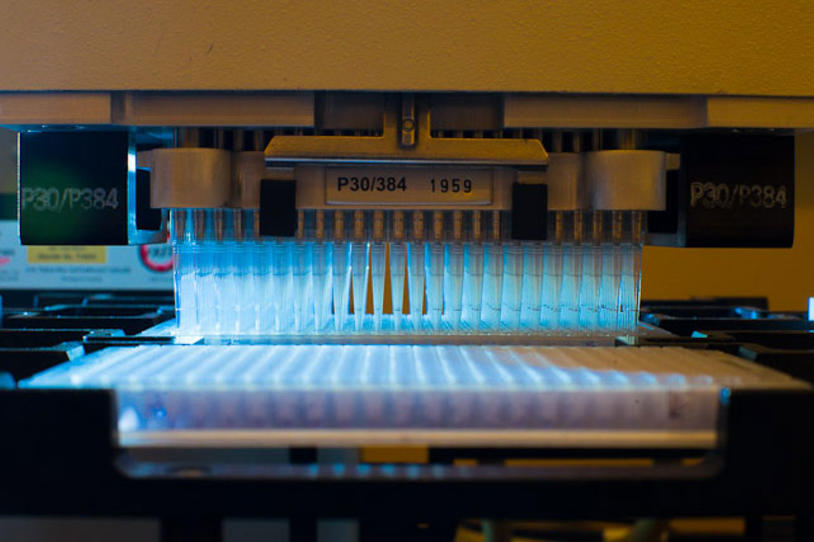
It’s been quite the year for Parkin: Just this spring and summer, scientists have published four papers defining the crystal structure of Parkin, the protein encoded by Park2, a gene which has been implicated in a small percentage of cases of Parkinson’s disease (PD).
“The discovery of the crystal structure of Parkin, and the fact that the findings from each of the four groups are remarkably consistent, is a real triumph for the field,” explains Mark Wilson, PhD, associate professor of biochemistry at the University of Nebraska, and an expert on the gene. “I’m hopeful that this new knowledge will translate into the development of a clear strategy for developing therapeutics that target Parkin, moving forward.”
The published papers stem from research performed by:
- MJFF Scientific Advisory Board member Jennifer Johnston, PhD, and colleagues
- A team of researchers at McGill University, led by Kalle Gehring, PhD
- Tobias Wauer, PhD, and David Komander, PhD, of the UK’s Medical Research Council
- Gary Shaw, PhD and Helen Walden, PhD of The University of Western Ontario and London Research Institute
Here’s the basic idea behind why this structural information that could help the field to better understand Parkin’s role in PD, and then, to develop drugs that act against it:
Scientists believe that Parkin may work as a sort of "watchdog" for mitochondria, the part of the cell that's responsible for converting energy into usable forms. It's believed that Parkin can detect, and then clear out, damaged mitochondria. In PD cases associated with genetic mutations in Parkin, scientists think that the resulting protein is under-functioning, and not clearing as much of this poisoned mitochondria from the cell. Somehow, they hypothesize, this leads to the onset of Parkinson's for some people. Until recently, however, it was a mystery as to why mutations led to dysfunction in the cell.
But now that scientists know the structure of Parkin, they have a clearer view of why it isn’t functioning the way it should when mutated. This newfound knowledge should also provide the field with new ideas as how to counteract this dysfunction, and make Parkin more active, which could help to clear the damaged mitochondria that remain in the cell in PD. The hope is that this might stop the disease in its tracks.
Jennifer Johnston, PhD, a member of The Michael J. Fox Foundation’s Scientific Advisory Board, and an author of one of the four recent papers to be published, helps to explain why the structure is so important to research.
“Let’s say that you have a problem with a new car, and you’ve never before seen its insides and how it works. Without a blueprint for its function, it would be very difficult to find a way to fix it.
“The crystal structure acts as a sort of blueprint for Parkin’s function. Scientists can see exactly how it works, and then begin to develop compounds to targets areas of dysfunction, and then better see if compounds applied to trouble areas are making a difference. It’s an incredibly useful tool for scientists targeting the protein to have in their toolbox.”
And more good news, says Wilson, is that the recently discovered structure itself actually presents a strategy for drug developers. “This structure very clearly shows why mutations are causing dysfunction in this protein, presenting a real path for making Parkin more active.”
Both Johnston and Wilson attribute the wealth of information on Parkin in 2013 to coincidence more than anything else, but say that the fact that these four papers were released within a short period of time underscores the reality that Parkin is gaining traction as a critical target for PD research. And since relatively little is known about what causes all cases of PD, better understanding any of the biological processes at work in the disease could have implications that extend beyond only those patients with Parkin mutations, to those with sporadic forms of Parkinson’s as well.
Johnston is enthusiastic about the fact that all four groups found very similar structures in their research — “99.9 percent identical to the untrained eye”— and for what it will mean for scientists working on Parkin-targeted therapies for PD moving forward.
“Drug developers now have a tool for understanding if a compound they’ve developed against Parkin is working or not,” she says.
“Since we’ve de-risked this critical part of the work, I’m hopeful that companies will now more readily commit resources to Parkin-targeted research.”
Stay tuned to this space for the latest developments in research devoted to Parkin.